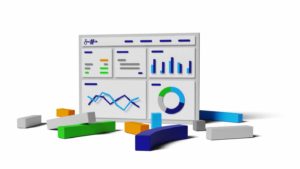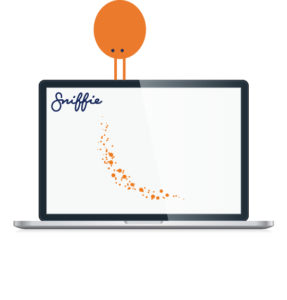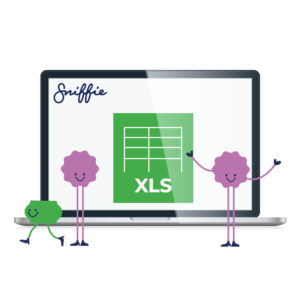Black Friday is coming, so you better start preparing already now
Even though the holiday season isn’t really “here yet,” now is the time to start preparing. Today, we face high inflation rates, rising energy costs, and general instability in the global political environment. Ecommerce companies encounter dropping sales as consumer purchase power is decreasing. To save money, many consumers will shift their shopping to the upcoming sales season. Therefore, you can be competitive in the upcoming sales season if you start preparing today.
Preparing for Black Friday discount campaign
Aside from local holidays and events that differ from one place to another, November to December is the super-sale season. This is the time of the year when you have events like Black Friday, Cyber Monday, and all the Christmas and New Year’s shopping.
Regarding holidays and more extensive discount campaigns like Black Friday and Cyber Monday, the earlier you prepare, the better. If you wait until the key holidays are around the corner, you’ll be overwhelmed by the preparation process. Then, before you know it, the time for the sale will already be here, and your offers won’t be as good as you want them to be.
Remember to plan your sales based on where your customers are, not where you’re based. And that’s a good reason for knowing the significant holidays and shopping seasons worldwide.
1. Set clear goals for the sales season
Knowing what you want to achieve in the sales season is essential to the preparation process. Setting goals should be the first thing you do. When you know what you want to achieve, you’ll be able to prepare in a way that makes sense.
Your goals for the sales season don’t have to be sales only. You can take advantage of the sales to clear some of the merchandise that isn’t selling well or give your business more exposure. Maybe also, grow some customer segments that you know are loyal for future purchases.
Actually, you don’t have to set one goal for the sales season. It’s more like a list of priorities for what you want to achieve. For example, you might clear some of your products that aren’t selling well and gain more exposure at the same time. But the main point is, you need goals. Hard goals.
PRO TIP: Want to move some of your slow-selling merchandise and boost your sales figures? Try selling your best and worst sellers as a bundle.
If you get creative with the offers, the possibilities are endless.
The starting point to set goals are:
- Select the products you use in pricing campaign
- Analyse your price elasticity and how discounting affects your volumes and profitability
- Make analyses on what types of customers you received in earlier campaigns
- Make a plan based on profits from the above analytics and hypothesis how you will grow you customer base and customer lifetime value
So let’s go through the five tips in an order of importance from the pricing perspective.
2. Get your suppliers to support you
You know the holidays that are relevant to your preferred target audience. You spotted the offers that should work for the upcoming holidays. And now, it’s time for the next step.
As you’ve probably guessed, knowing what offers to give your customers is just the start. To ensure campaigns work smoothly, you need your supply chain to support you.
Firstly, ensure your supply chain is solid and eager to help you with purchasing prices and campaigning. Otherwise, you’ll have difficulty getting the sales you are aiming for. So, you can improve your positioning by negotiating special campaign terms with your suppliers. This year this has become especially important for EU based eCommerce companies.
Let me give you an example. EU’s new Omnibus Directive became in force in May 2022. But, as you can only campaign for some months a year, most of the year, many eCommerce companies use dynamic pricing to keep their prices competitive. EU requires you to show the previous price for 30 days. Companies using dynamic pricing now face the reality that their last 30-day price is so low that they cannot make any margins with their products. Campaigning needs support from your suppliers, so that you make profits.
Ensure you and your suppliers have agreed on the products you accomplish the campaign with and that you have further marketing support from them. Here is a good blog post on how to get started with your promotional pricing strategy in EU.
2.1 Planning is essential
Secondly, you must be sure to guarantee the order fulfillment process. Miss that, and it could spell disaster for your business. The earlier you start optimizing your supply chain before a specific holiday, the better the service you’ll be able to provide. That’s how you deliver products to your customers, and get all the materials you need. So, what makes a holiday season different?
The answer is simple, and that is the stream of orders. You have an average number of orders in standard times, which you already know how to handle. However, you will have difficulty predicting the outcome in today’s economic environment. Especially in a market with high inflation rates.
For example, when you do a discount campaign, you expect the number of orders to go way up. And this will affect everything related to your business, from buying the products you need to ship to your customers. Your market behaviour will change due everyone lowering their prices. To take this into account, your forecast models should include fine-tuned market behaviour settings that rely on the recent data also.
Ensure your supply chain and share your plans with them. Then make sure they will support you on the delivery.
2.2 Make sure you can deliver on time
Unless you sell a digital product, the overflow in orders will affect your business. So do the analytics on the expected outcome to know how much your volumes will rise. Then you know how your business needs to operate under such pressure.
For example, if your business relies on delivering products to customers, you’ll need to sort that out in advance. Whether you have a dedicated delivery team or rely on a third-party service provider, you must plan for the rise of orders in advance.
You can either outsource some of the product deliveries for this day or arrange it in advance with your delivery partner. You can avoid reputation-damaging situations where you accept too many orders, then apologize to your customers for not being able to fulfill them.
So, ensure your inventory, supply and sales are all fixed to support your campaign goal.
2.3 Get all the supplies you need
While some businesses can overstock products in advance, this is only an option if you have cash. But what if you cannot stock for all the sales you expect? In that case, you’ll need to arrange extra deliveries with your supplier in advance. By doing so, you’ll be able to ensure your ability to keep up with the increased demand. Nothing is worse than not being able to fulfill your customer’s orders and having them go straight to your competitors.
Remember that you’re not the only business trying to get those supplies in the holidays and shopping season. Your competitors are doing the same thing, so make sure to arrange this with the suppliers in advance.
Follow the tips for optimizing your supply chain
If you want your business to have a reliable and well-optimized supply chain, the following tips will help:
Build strong supplier relationships
Your supply chain is what keeps your business going. So, build strong relationships with your suppliers and anyone who directly impacts your supply chain. Then, negotiate the correct prices and campaign support early in. You can use even unconventional tactics to help you and your supplier to co-operate tightly.
By building strong relationships with those people, you’ll be able to resolve any issues that might arise before they become serious problems.
Address your supply chain risk
There is indeed some risk in any supply chain. However, addressing different risk factors before they become a real problem is the smart thing. So when you look at your supply chain, you’ll notice some things that will cause problems sooner or later. Resolving such issues is a great way to keep your supply chain flowing and prevent disruption to your business.
Use technology to your advantage
Technology is improving many business processes; the same goes for your supply chain. Using the right technologies, you can speed up your purchasing process and make it more efficient. It might cost more upfront, but investing in the right tech is suitable for your business in the long term.
Lower your storage costs
Storing items for a long time comes with a cost, and in many cases, it’s an unnecessary cost. So before you stock on a particular item, ensure the cost is worth it. Otherwise you end up doing markdown campaigns to get rid of your stock. In addition, you can often eliminate storing large quantities of an article by improving your supply chain to ensure getting the items you need at the right time.
20 techniques to get suppliers to support you
Get the tips on how to get your suppliers to support you. Our blog post on how to improve pricing with 20 unconventional supply chain techniques will get you there.

3. Make sure your pricing is spot on
Now that you have optimized your supply chain to keep up with the increased demand, it’s time to focus on pricing your products. After all, an attractive price tag and perceived value for money are what an offer is all about.
When it comes to sales, prices play a significant role. While price is more critical in some industries than others, it’s always important to consider. When you get your pricing right, you’ll be able to outsell your competitors and sometimes do it with higher profit margins. Especially if you get support from your suppliers to make a valuable offer.
Despite sounding like a simple task, there’s more to pricing than meets the eye. When you’re pricing your product, you’re not just setting lower or the same prices as your competitors. Instead, a specific campaign pricing strategy is necessary if you want to price your products for maximum profitability and competitiveness.
Keep in mind that lower prices don’t always mean more sales. However, in some cases, lowering your prices can affect how people perceive your products’ value. The concepts you must understand are price signaling and price anchoring. Price signaling means your products are more attractive to customers with a higher price tag. On the other hand, price anchoring means comparing the real price and the discounted price. If you are using dynamic pricing, you should consider pausing it 30 days before the campaign and negotiate some support for this manouver. While you lose sales in the 30 days, you can easily make it back by having a high comparison price in the campaign.
3.1 Use pricing tools to understand profitability
No matter your product pricing strategy, the right tools make the process easier, faster, and more profitable. Suppose you’re not using a pricing tool like Sniffie. In that case, you’ll have to manually keep track of your competitors’ prices, sales volumes, seasonality differences, and many other things. Things that pricing tools automatically count in when suggesting a price.
In eCommerce, prices change significantly, and keeping track of those is a manually painful process. As a result, you lose volumes or profit unless you have a dynamic market reference on updated prices. Getting your pricing right during the holiday shopping season or any of those 1-day shopping events makes a huge difference. And to make the pricing process even more efficient, you should automate as much of it as possible. This way, you’ll make your prices as competitive —and profitable— as they can be before the holiday season without wasting much time on the process. Then before the holiday season, automatically raise the prices you need and start campaigns on time.
3.2 Stay on top of things and monitor competitors
Another advantage of using a price monitoring tool is staying on top of what your competitors are doing. Most businesses start having sales before the actual season, as early as October.
Analyzing the discounts, they’re offering and keeping track of their different offers will help you understand what they’re planning for the holiday season. By doing so, you’ll be able to prepare better adjusting your offers or at least make sure you’re offering something at the same level.
Of course, the data from a single competitor doesn’t have statistical significance. However, when you’re using a tool to monitor pricing for the whole market simultaneously, you’ll start to see the big picture in the prices.
3.3 Create appealing campaign prices
Now that you know the market pricing, you can start planning the discount campaigns. The first thing is to understand your price elasticity. How do your customers react to price? Especially when all your competitors are lowering their prices at the same time. Use your previous year’s seasonal sales data to understand the right campaign price that gives you the right volumes and profitability.
Then automate the campaigns and ensure your follow-up campaigns (Cyber Monday etc.) do not fall too low. If they do, create different campaign groups so you can keep good prices even in ever-lowering discount campaigns. EU’s Omnibus Directive gives you a 60-day period, which you can compare to the starting price in the campaign. When you set the comparison price right, you are well of. If your campaign becomes longer or prices are too low, then change the products you use during the campaign.
Calculate your price elasticity for free
Calculate your price elasticity with our free tool to know how price affects your conversions.

4. Get your marketing up to speed
You have prepared your supply chain for the sales season and priced your products for success. The next thing you want to do is make sure that people will know about your products. That’s where your marketing plan comes into play.
All businesses try to sell their products simultaneously and to the same people. The result is an endless bombardment of marketing messages that most people try to ignore. And that’s why your marketing must stand out.
Before you start bringing your creative marketing ideas to life, there’s one thing you should think about first—the right media channels.
4.1 Choose the right marketing channel
There are more than a few ways to market a product to people—from paid ads to emails and even influencers. The right choice depends on your customers and how you usually interact with them.
Do you have an extensive email list? Then email marketing might be the priority. People are already familiar with receiving newsletters and different types of promotions from you via email. You could even inform them about your offers in a creative way in advance and create exclusive offers for people on your email list. Give them more reasons to love being on that list.
The same applies to your paid advertising. You probably already know the social networks that your typical customers are likely to use. So, marketing your offers on these networks makes more sense.
No matter your marketing channel, you should focus on creating a message that stands out and is meaningful, especially in these turbulent times. If you don’t do that, you won’t survive the brutal competition of the sales season. Sad but true!
4.2 Plan and automate your campaigns
Another thing to remember about the sales season marketing is that situations become hectic. Everything happens fast; just like your offers, you need to prepare your marketing plan in advance.
By planning, we mean everything from the marketing channels you’ll use to the copy of the ads. Doing so will give you more time to deal with any problems that might arise during the sales season.
The main point is that having everything planned well will help you quickly negotiate the best deals with your suppliers. And when your terms are right, your profits are right.
4.3 Find free organic traffic for your campaigns
While you can get as much paid traffic to your website as you can afford, nothing beats the good old organic —and free!— traffic. And for that organic traffic to find your website, your SEO needs to be on point.
Understanding what you are about to offer might open up new category level opportunities. Plan your campaign well, negotiate it with your suppliers and optimize your product SEO early on, to get that high ranking traffic to support your Black Friday campaigns.
4.4 Your finest friend during sales seasons: Google Shopping
Google Shopping is a must if you do eCommerce. In many markets, more than 50% of all conversions come from there. But, again, your ads will appear first if your price is the most attempting. Monitoring your competitors for Google Shopping is also vital to optimize your Google Shopping performance. So make sure your price is on the spot when the campaign starts. As you can see now, your early work with your suppliers will make you a winner.
5. Put your website to the test
You’ve put much effort into preparing for the upcoming sales season. Your offers, your supply chain, and how you will market your product. Next you should test your website.
Having a reliable website that will work during the holiday season is the foundation for everything we’ve previously mentioned. If your website crashes or doesn’t perform well, everything you’ve done to prepare would boil down to nothing. Also, keep in mind that due to the COVID-19 pandemic, many more people will be doing their shopping online.
Here are the main things you should test before you offers go live:
5.1 Make a load testing
Your website could perform well now, but that could change with heavy traffic. To ensure that your website is ready for that sales season traffic surge, you should do some load testing in advance.
This way, if there is a problem, you’ll be able to fix it before it’s too late. You can either have your developer do this testing for you or, if you have the technical skills, do it yourself using a tool like Loadview.
5.2 Customer checkout
A major problem with customer checkout isn’t exactly unheard of in the eCommerce world. The problem is that most eCommerce business underestimate the power of easy checkout in their stores. It doesn’t mean that the checkout isn’t working. Instead, people face problems in the checkout process (added delivery costs, slow and unclear checkout, bad payment terms) makes the process super-annoying. Such issues will cause people to abandon the checkout process, resulting to loss in ad spending and lost sales.
5.3 Mobile optimization
Nowadays, 34% of all online retail purchases happen on a mobile device. In addition, Almost 52% of all online traffic is from mobile devices. So, if your online shopping experience isn’t optimized for these devices, you’re missing out. Ensure your website is mobile-friendly to give your customers the best possible mobile experience. Keep in mind that mobile payment solutions like MobilePay are becoming increasingly popular.
Offering a smooth checkout process with these mobile payment methods will result in a better user experience for your customers and, consequently, more sales.
5.4 Page load time
Despite sounding like a trivial issue, your page load times can make or break your sales season outcome. According to a study that analyzed the relationship between page load times and bounce rates, pages that load in more than 3 seconds —up to 4 seconds— have a bounce rate of 24%.
That’s almost a quarter of your visitors lost before seeing your offers. So make sure your page loads as soon as possible to maximize the ROI of your ad spend and your sales revenues.
5.5 Focus on cross-selling
Driving traffic to a website or landing page costs money. Unless you’re getting a ton of organic traffic, you’re probably using some form of paid ads to get this traffic. To ensure you get the most out of your marketing spend, you must make every visit count. And the way to do that is with cross-selling. By selling more products to the same clients, you’re boosting your return on marketing investment. If you’re wondering how you can cross-sell to your customers, here are a few tips that’ll help:
5.6 Understand the difference between cross-selling and upselling
The first step toward successful cross-selling is understanding what it isn’t. For some reason, many people confuse cross-selling with upselling. So, let’s make these as clear and straightforward as possible.
Upselling is when you convince customers to buy a better —and more expensive— alternative to the product they originally wanted. So, if you walk into an Apple Store and they convince you to buy the iPhone 11 Pro instead of the iPhone 11, that’s upselling.
On the other hand, cross-selling is when you sell additional related items to the same customer. So, if you walk into that same Apple Store and they convince you to buy a pair of Airpods with your iPhone, that’s cross-selling. It’s that simple.
5.7 Make the complementary products clear
If your eCommerce store wants to cross-sell like crazy, you need to make the complementary items clear for your customers. Of course, that’s something that all eCommerce giants do.
For example, when you buy something from Amazon, you’ll notice that it’s suggesting items that are “frequently bought together” with whatever it is you’re buying. Sometimes, you’ll even get a discounted price when you buy these products as a bundle.
Of course, if you have an online store that sells a few items, it’s easy to manually set the relation between them. However, in the case of stores with many items, you’ll need a system that suggests similar products automatically.
5.8 Watch out for market cannibalization
Market cannibalization happens when you have multiple products competing for the customer base. This is likely to happen when you change the price of one product, unaware that you’re putting it in direct competition with another product you have.
While this sounds manageable if you’re selling a few products, it’s not when you have many products in the same campaign. At least when you’re doing it manually. Then, you can use automatic pricing tools to minimize cannibalization and optimize your prices for maximum profit.
5.9 Follow up with RELEVANT offers
If a client has already made a purchase, this doesn’t mean that the cross-selling opportunity is over. Following up with an email with relevant products your customer might be interested in buying is a great idea. You can also use these emails as an opportunity to improve your customer relationships.
This is a great customer experience if your products genuinely improve their experience. Don’t create spam emails that try to sell anything to anyone. Create meaning. Keep things relevant and focus on providing a great customer experience, and the cross-selling opportunities will present themselves. This is a win-win situation for you and your customers when done properly.
Final words
After reading this guide, we hope you have a clear view of how you will prepare your business for the sales season and now know the importance of starting early. As we are a pricing automation company, we are here to help you in any way we can. We are happy to share all our knowledge about pricing and how You should use it to maximize your profits.
If you have any questions or thoughts regarding pricing, please contact us.
Calculate your customer lifetime value
Calculate your customer lifetime value with our free tool to know how high is your customer lifetime value.



